Everything about the covering material "Agrospan"
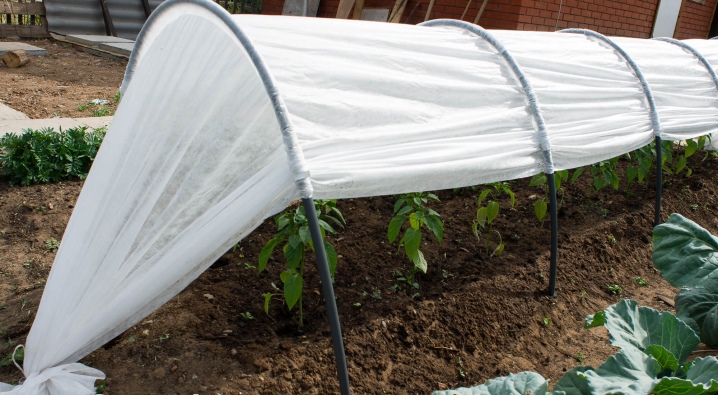
Unexpected spring frosts can wreak havoc on agriculture. Many summer residents and professional gardeners are wondering how to keep plants from the adverse conditions of changeable weather and ensure a harvest. To solve this problem it is advisable to use protective equipment in the form of covering materials, such as "Agrospan".
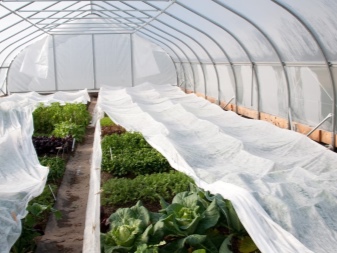
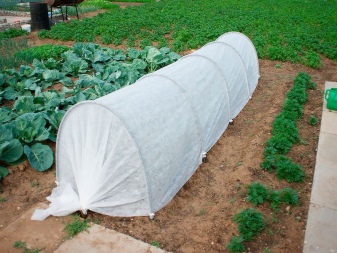
What it is?
Covering materials are of different types, but they have one general purpose - creating the most comfortable conditions for early ripening of fruits... Plant shelters are non-woven fabrics of various sizes that cover the planted plants.
A good covering material is made of quality chemical fiber. Besides, differences in sides and polymer density provide protection from both cold air and weathering, and from the harmful effects of ultraviolet rays.
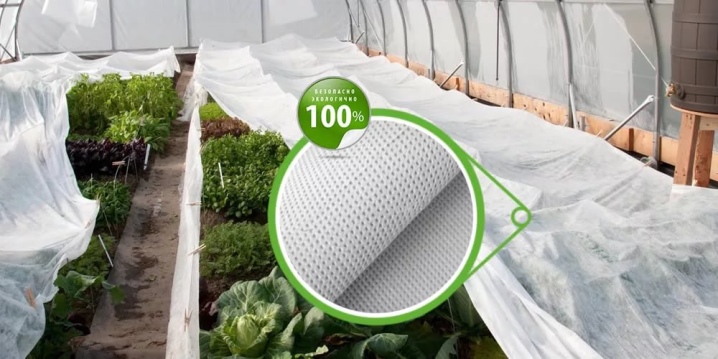
Specifications
Agrospan is included in the list of the most popular covering materials suitable for use at different times of the year. Synthetic nonwoven fabric consists of many polymer fibers and has a translucent white, black or other color.
"Agrospan" distinguished by its own labeling, thanks to which it is possible to determine web density... Exactly will depend on the density degree of protection against penetration of cold frosty air in winter and incinerating ultraviolet rays in summer. Thin fibers allow you to create a material with a uniform density distribution over the entire width of the panel.
"Agrospan" got its name from the unique technique of creating agrotechnics. This technology is called spunbond, thanks to which the canvas is completely resistant to the action of various chemicals and pesticides used for soil cultivation, pests, dangerous acid rain.
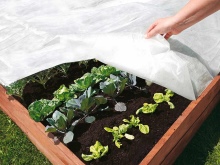

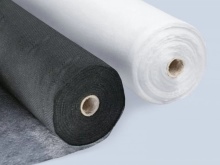
Advantages and disadvantages
Like any other agro-fabric, Agrospan has certain advantages and disadvantages. The indisputable arguments in favor of choosing this material include the following:
- perfectly copes with the main task - the creation and maintenance of the most favorable climate for uniform growth of plants;
- regulation of the degree of soil moisture due to its ability to perfectly pass water and evaporation, while condensing the required amount of moisture underneath;
- regulation of the temperature regime (smoothing out the differences between the average daily and average night air temperatures), thereby ensuring reliable protection of the future crop from overheating and sudden cooling;
- ensuring early ripening of fruits, which gives farmers a chance to get a crop throughout the season and harvest it without unnecessary haste;
- the term of use depends on how carefully the material is handled - ideally, Agrospan can last even more than 3 seasons in a row;
- reasonable price and absolute availability.
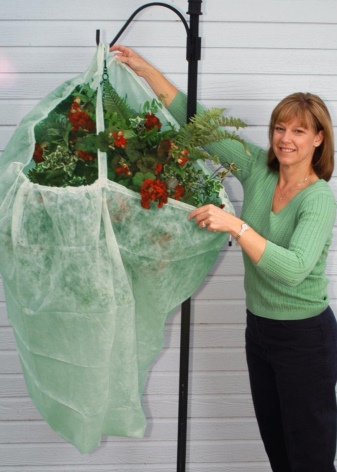

There are very few disadvantages of this covering fabric, but they still exist:
- with the wrong choice of brand, problems may arise associated with insufficient receipt of sunlight by plants that remain sheltered for a long time;
- thermal insulation, unfortunately, leaves much to be desired, since the material may be completely useless if severe frosts begin in combination with a cold squally wind.
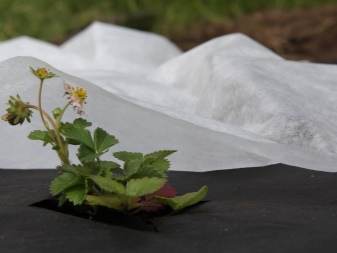
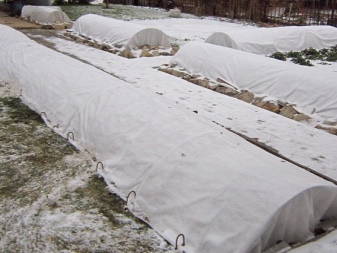
Scope of application
Agrospan is widely used in various agricultural areas... For its low cost, ease of use, this agro-fabric is loved not only by simple summer residents who use it to protect their gardens and constructing small greenhouses, but also by large farmers and agrarians who use spunbond to cover huge fields.
This material can be used in any season. Let's start early spring... For newly planted seeds, the worst thing is night frosts. When using such a shelter, the seedlings will be provided with good protection.
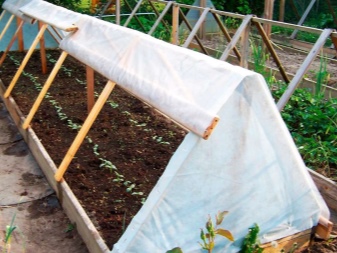
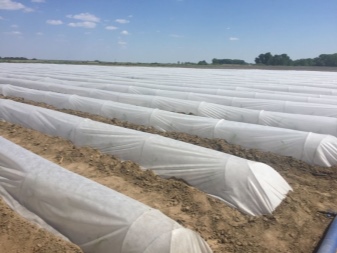
Summer frightens with its heat. The air warms up so much that the sun literally heats up, trying to kill all living things. In this case, the covering material prevents the penetration of ultraviolet radiation, regulates the temperature, bringing it closer to the daily average.
With the onset of the first autumn cold weather I want to continue the harvest time, with which the chemical canvas can really help.
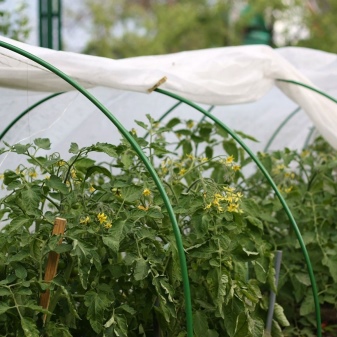
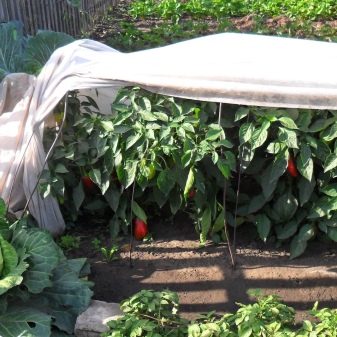
In winter plants also need reliable protection. Perennial plants may not withstand harsh weather, so shelters are used for berry crops such as strawberries.
And also "Agrospan" works well against weeds and insect pests.
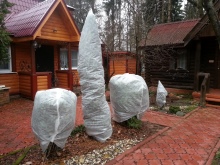
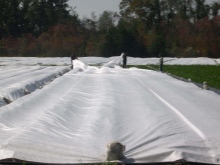
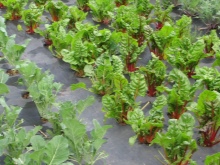
Varieties
Depending on the purpose, method, scope of application, there are several varieties of this material. Agrospan is classified by brand (modifications - density value in g / m²) and color.
Brand
The most popular modifications, in which Agrospan is most applicable in the field of agriculture, are Agrospan 60 and Agrospan 30... The same spunbond can be found in hardware stores with intermediate markings. Agrospan 17, Agrospan 42.
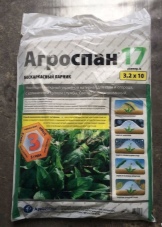
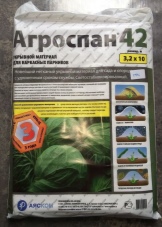
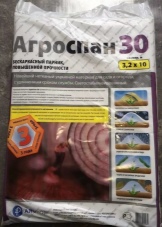
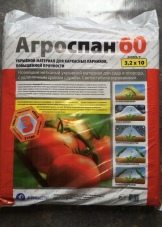
For covering seedlings and protecting them from small temperature fluctuations in early spring in warm regions, it is advisable to use spunbond marked 17 or 30. Such a canvas is translucent, which means that it easily lets in scattered sunlight and provides stable air exchange, while preventing night frosts from destroying seeds and seedlings. Plants are covered with such a film, sprinkling on top with soil or sand. As the average daily air temperature rises, the canvas should be gradually removed. If necessary, strawberries, other cold-tolerant crops may only be covered at night.
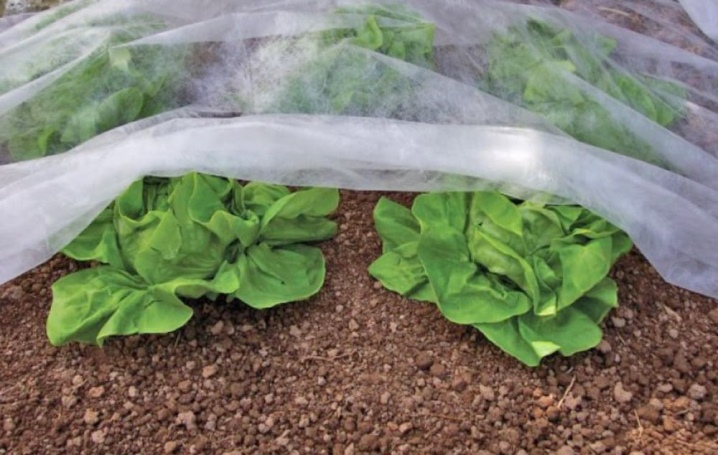
Agrospan 42 and Agrospan 60 brands are intended primarily for fastening to the frame of the greenhouse. Many avid summer residents are accustomed to using ordinary polyethylene film, however, replacing it with a polypropylene spunbond canvas of a similar density, they are convinced that the operation of greenhouses is indeed facilitated several times.
The more difficult the climatic and weather conditions, the more dense spunbond you need to choose.
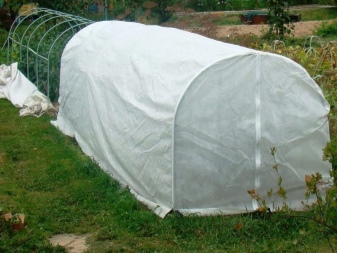

Colour
"Agrospan" as a covering material differs not only in the density of the canvas, but also in its color. At the same time, the choice of color has a tremendous effect on the result of the shelter.
White translucent material It is intended directly for protection from cold, and also, depending on the modification, from snow in winter, hail in summer, from bird raids and infestations of small rodents.
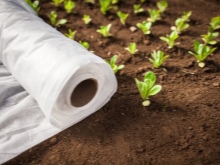
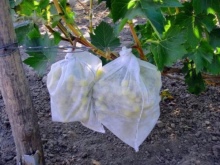
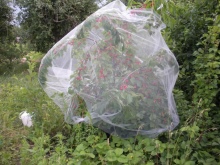
Black spunbond Is a polypropylene material with added carbon in the form of black charcoal. The black color of such a canvas ensures the fastest possible heating of the soil. However, the main purpose of the black Agrospan is to combat weed breeding. It is necessary to cover the ridge with a black film and leave it there until the harmful plants are completely removed. Light-loving weeds die very quickly in such conditions.
Another useful property of the black film is the protection of fruits from rotting and damage to their integrity by insects.
Thanks to spunbond, contact of vegetative and generative organs of plants with the ground is prevented.
Thus, black "Agrospan" has proven itself as a mulch.
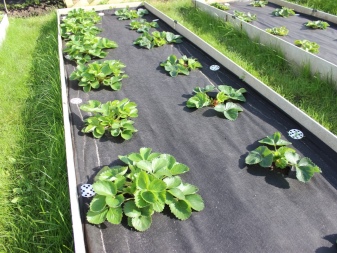
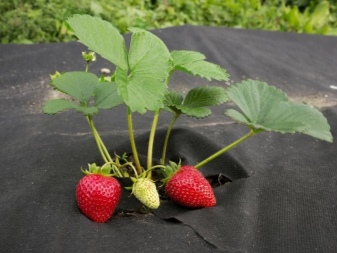
Except polypropylene white and black colors, there are many other color options, each of which performs a specific function and brings the corresponding result. Exists:
- two-layer "Agrospan" - combining the functions of white and black materials;
- red-white - an increase in heating properties;
- aluminum foil film - the material reflects the sun's rays, additionally providing plants with diffused light;
- reinforced multi-layer fabric - the highest density, reliability of the shelter.

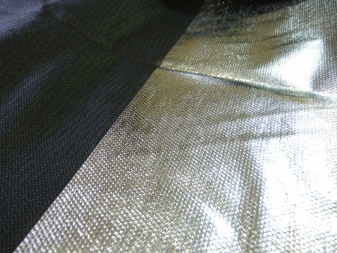
How to choose?
To choose the most suitable material, you need pay attention to its properties... The functions that the canvas performs must correspond to the intended use of the film. Perhaps, the crops growing in the garden need foiling or reinforcement, which is important for areas of risky farming, which are characterized by sharp, serious changes in night and day temperatures.
Agrospan manufacturers are actively engaged in the creation and production of various colored materials. Red film accelerates metabolic processes, that is, photosynthesis and crop growth occurs much faster. A yellow canvas, due to its brightness, attracts various insects and other pests, knocking them out of the way.

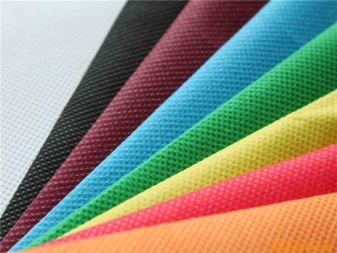
Usage Tips
To achieve the desired results in horticulture and horticulture, it is important to use the material correctly. The manufacturer must include in the package instruction, in which, if necessary, you can find answers to many questions of interest. In general, the correct application of Agrospan for one year is enough to understand whether there is any effectiveness from it. At different times of the year, for different plants, the same material will have to be used in different ways. The combination of films of various colors and modifications is not excluded.
Soil maintenance should begin in the spring, immediately after the snow melts. To speed up the germination time of early and early crops, it is necessary for the soil to warm up to a comfortable warm temperature. Ideally suited for this single layer black spunbond... Weed growth will be stopped immediately, and the first seedlings will be able to germinate through the small holes made in advance. In April, March, the air is still quite cold, night frosts are not uncommon, therefore the shelter used must have a high density (Agrospan 60 or Agrospan 42).
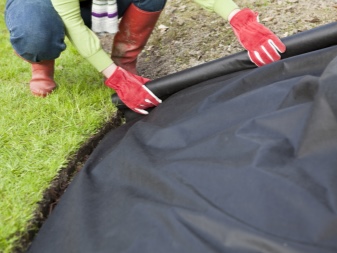

With the onset of summer, you can start using double-sided black and white or black and yellow spunbond. In this case, the plants need to be covered with a black side to create a certain microclimate, to protect against pests, and the light side of the film should be facing the sun, since it is the white color that is responsible for the temperature and light conditions.
You can put Agrospan directly on the plants, carefully sprinkling the edges of the canvas with earth.
As it grows, the material will rise on its own. Naturally, a lower density spunbond is suitable for this time of year.
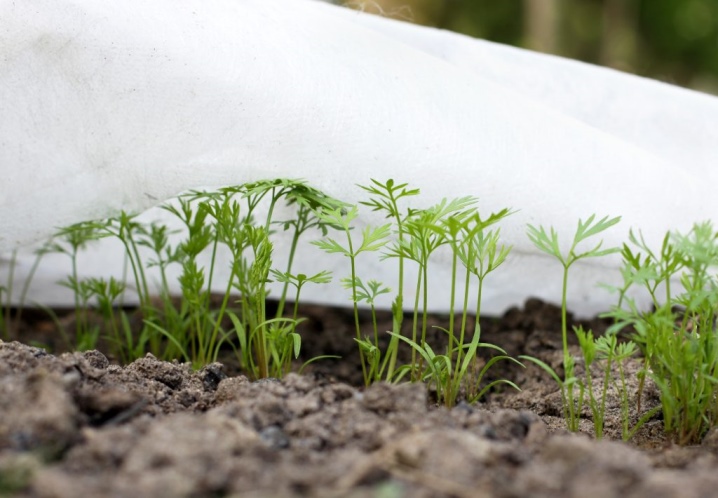
Many people wonder how to protect trees and shrubs during the cold season, for example, in late autumn or winter, when the first severe frosts come, but there is still no snow. Covering grapes and other thermophilic crops is really a must, otherwise the plants may freeze. This requires white film of high density, reinforced "Agrospan" is also well suited. Optionally, you can purchase frame material, which greatly simplifies the shelter process.
How to fix "Agrospan" in the garden, see the next video.



































































The comment was sent successfully.